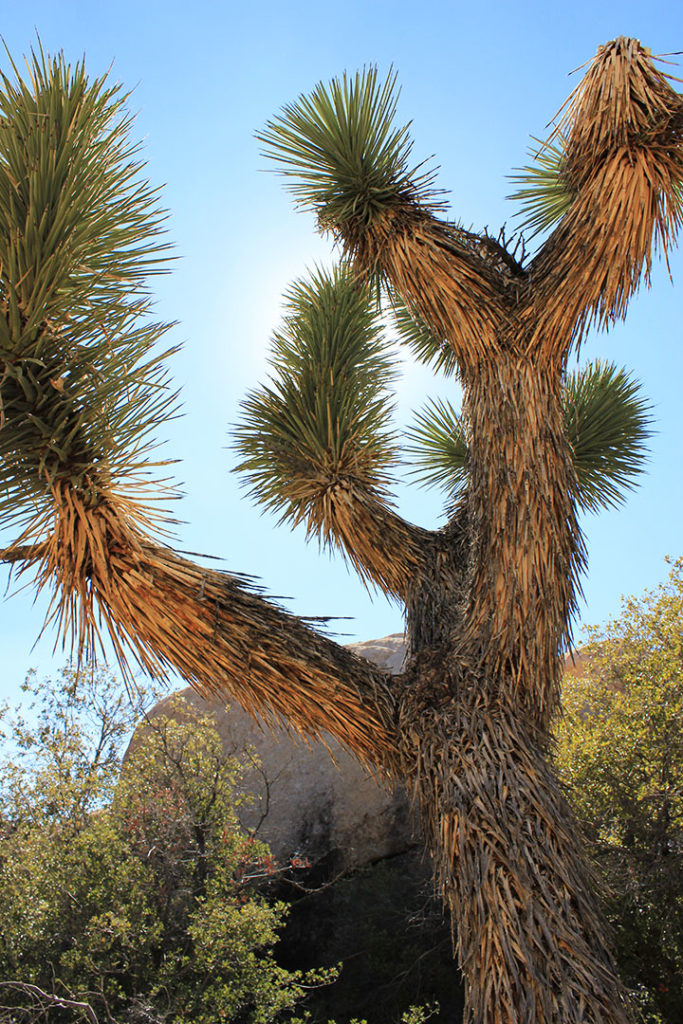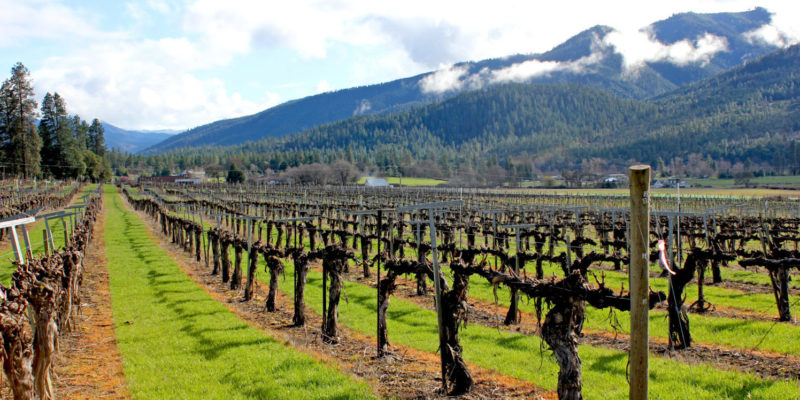This post may contain affiliate links, which means I may receive a commission if you click a link and purchase something that I have recommended. This won’t cost you any extra money. For more information see my Privacy Policy.
Visiting Joshua Tree National Park
Joshua Tree National Park is only a few short hours from Los Angeles, San Diego, and Las Vegas. This beautiful otherworldly landscape has become a destination for hiking, climbing, camping and exploring the arid Mohave Desert. Last year, in 2018, nearly 3 million people visited Joshua Tree and for the first time, I was among them. I had high expectations which were surpassed as we spent the entire day exploring the natural beauty of the park.

Plan Ahead – Water, Gear & Weather

We visited in October which is high season at Joshua Tree. The Fall thru Spring months are much more comfortable than the blistering triple-digit summers. Even so, water was a must. Go prepared with sun protection, proper shoes and lots of water. In addition, always check the National Park Service website before venturing out to the Park for alerts and closures. The day prior to our arrival the area was hit by thunderstorms which resulted in the Joshua Tree Visitor Center entrance being closed due to dirt and debris having washed over the roads. Luckily, the Oasis Visitor Center is a few miles east down Highway 62 in Twentynine Palms. We stopped at the center and obtained our $30 entry pass and headed down the road ready to explore.

Stunning Desert Landscape
The main road into Joshua Tree National Park from the Oasis Visitor Center is Park Boulevard. We didn’t make it far before pulling off the road and exploring the vast expanse of desert. The scale of the area is immense and the geology striking. The park encompasses 792,623 acres of which 591,624 is designated wilderness area. Mountain ranges rise in every direction with the elevation ranging from 536 feet to 5,814 feet. The boulders which dot the landscape date back 100 million years and are the result of molten rock which formed monzogranite. These rocks were below the surface and over the eons were slowly carved out by water seeping into the ground. Later flash floods washed away the remaining sediment and smoothed the edges giving us the formations of gravity-defying boulders that we see today.

Arch Rock
Eight miles from the Oasis Visitor Center the road comes to a fork. Instead of continuing west on Park Blvd. we took Pinto Basin road for 3 miles to one of the highlights of the park, Arch Rock. Here we found one of the parks many camping areas and a scenic hike with stunning views. Climb up to the areas namesake feature, Arch Rock and have someone snap a photo. Be careful coming down though, the loose gravel resulted in a fall for one in our party. As I mentioned before, proper shoes are important!



Skull Rock
We headed back in the direction we came from on Pinto Basin Road for 3 miles then turned west on Park Blvd. Our next destination was Skull Rock. This is a popular spot with parking alongside the road and many people stopping to see this landmark. Again erosion has made for natural beauty as it carved what looks like eye sockets into the massive granite stone. I would say this was the most touristy part of the park with a line of people waiting their turn to get a photograph with the skull. Adjacent to the area is the Jumbo Rocks Campground and a hiking trail.

Barker Dam

We headed down the road hoping to see everything on our list. From what I’d been told Barker Dam was a must-see. We continued on Park Blvd. for about 10 miles until we reached Barker Dam Rd.

This area has a large parking area leading to a 1.8-mile hiking trail. We made our way around the loop-shaped trail past petroglyphs, towering boulders, and twisted Joshua Tree’s until we reached the water-filled dam. The area near the dam is a collection of large boulders which are easy to climb. Once you traverse these rocks the view of the surrounding valley is gorgeous.


Joshua Trees
I’d be remiss to not mention the park’s namesake Joshua Trees. These prickly pokey agaves (Yucca brevifolia) are native to the Mohave Desert. Being unique to this area they let the visitor know they’re somewhere special. The average life span of one of these beauties is 150 years. Unlike trees, the age is determined not by rings in the base, but by their height. The tallest tree in the park is over 40 feet in height and the assumption is that its age surpasses the 150-year average. These plants provide habitat for numerous animals in the park. You may notice there is another plant which looks very similar to a Joshua Tree. This is the Mojave yucca, (Yucca schidigera) which also grows throughout the park.

The fact that these plants remain intact is in great part due to a woman who lived in the early 1900’s. Minerva Hoyt of Pasadena led efforts to protect the area from those who wished to harvest the plants and develop the land. The area was designated a National Monument in 1936 and in 1994 became a National Park.


Desert Habitat
The park is a vibrant ecosystem full of life. You’ll likely see lizards, birds, and squirrels on your visit. If you are at the park at dawn or dusk you’ll increase your odds of seeing rabbits, bighorn sheep, snakes, coyotes or kangaroo rats. According to information provided by the park, “Joshua Tree provides habitat for 813 higher plant species, 46 reptile species, 57 mammal species, and over 250 bird species”.

Oasis of Mara
Because of the washed-out roads we couldn’t exit at the Joshua Tree entrance but had to backtrack to the Oasis Center. We stopped briefly when we reached the exit and walked over to the Oasis of Mara. This natural spring was one of the original areas of human settlement, first by the native Serrano and Chemehuevi people then miners and now it marks the entrance to the park. People came to this area because of the spring water but the reason the water bubbles to the surface is somewhat surprising. Beneath the Oasis of Mara lies the Pinto Mountain fault. The movement of faults beneath the earth forces the water upward, resulting in this life-sustaining oasis. In fact, the entire park has fault lines running through it including the famous San Andres Fault which runs along Joshua Tree’s western border.


Stay the Night
Although we’d spent all day at the park we wished we had more time to explore and most of all to experience the park at night. The stars shine brightly here, unobstructed by the city lights. Most of the U.S. population lives in areas where clearly seeing the night sky and catching a glimpse of the Milky Way are impossible. If you get the chance to visit Joshua Tree plan ahead to stay after dark. To either stay late or be nearby for an early start to the day there are plenty of overnight options. The park has multiple camping areas or if you prefer a bed for the night, both Twentynine Palms and Joshua Tree border the park and Palm Springs is a 45-minute drive from the Joshua Tree Visitor Center. For a plethora of valuable information visit the Joshua Tree National Park website prior to your visit.
Enjoy!








